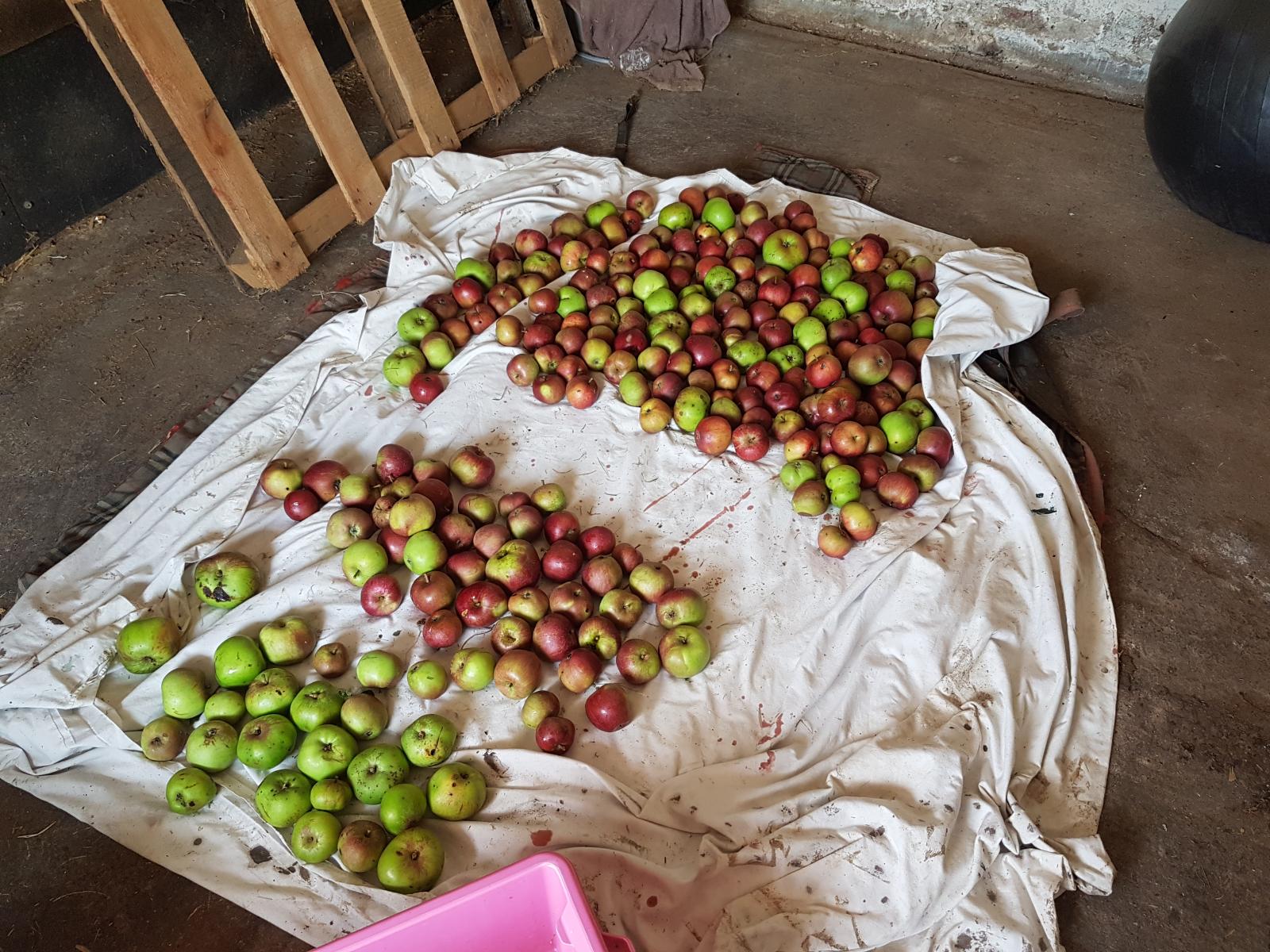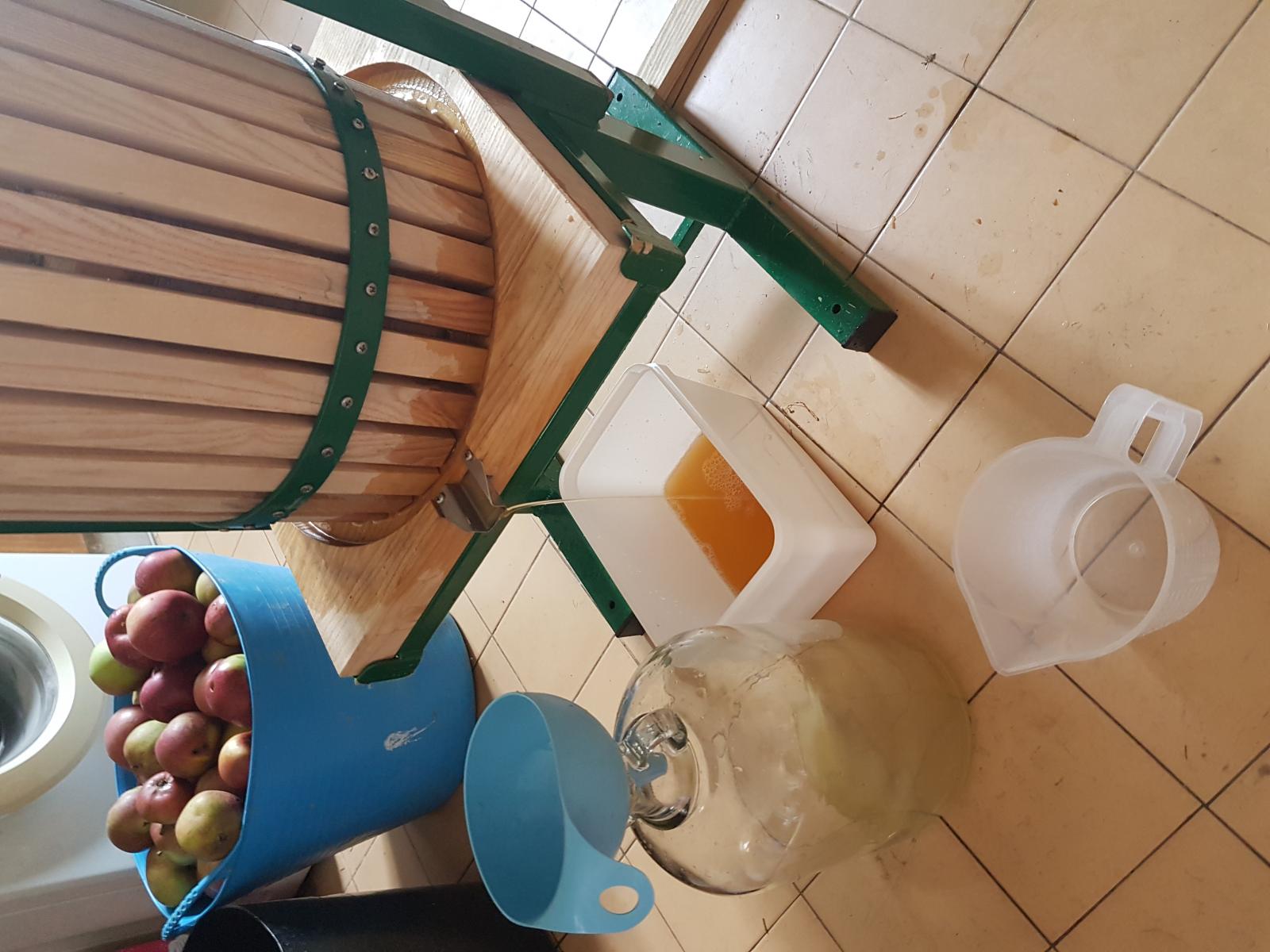Amnesia180
Member
- Joined
- Aug 18, 2017
- Messages
- 19
- Reaction score
- 0
Hi all,
I'm new to the forum and have joined to get some tips on cider making.
Ive got an orchard with a mix of eating and cooking apples and instead of baking with them would like to try and make some cider (I figure now is the time to start as they're just beginning to drop).
I just wanted to double check I've got the basics correct....
I've got some kit to press and chop the apples, so obviously do that first.
Then, once I've got the juice, put the juice into a fermentation bucket with campden tablets for 24 hours and cover with a tea towel or put the lid on losely.
After 24 hours, add yeast (I'm going to try ervin English ale yeast) then leave a few days with lid on losely.
Then, after a few days move to liquid into demijohns with an air stop for a few months. Fill right up to ensure no air is in.
Once bubbles stop, fermentation is complete.
Move to clean demijohn leaving sediment (lees).
Leave another month and then bottle into sterile ale bottles and use crown caps to seal.
Does that sound about right and can I do anything else?
Thanks for any advice!
I'm new to the forum and have joined to get some tips on cider making.
Ive got an orchard with a mix of eating and cooking apples and instead of baking with them would like to try and make some cider (I figure now is the time to start as they're just beginning to drop).
I just wanted to double check I've got the basics correct....
I've got some kit to press and chop the apples, so obviously do that first.
Then, once I've got the juice, put the juice into a fermentation bucket with campden tablets for 24 hours and cover with a tea towel or put the lid on losely.
After 24 hours, add yeast (I'm going to try ervin English ale yeast) then leave a few days with lid on losely.
Then, after a few days move to liquid into demijohns with an air stop for a few months. Fill right up to ensure no air is in.
Once bubbles stop, fermentation is complete.
Move to clean demijohn leaving sediment (lees).
Leave another month and then bottle into sterile ale bottles and use crown caps to seal.
Does that sound about right and can I do anything else?
Thanks for any advice!


![Craft A Brew - Safale S-04 Dry Yeast - Fermentis - English Ale Dry Yeast - For English and American Ales and Hard Apple Ciders - Ingredients for Home Brewing - Beer Making Supplies - [1 Pack]](https://m.media-amazon.com/images/I/41fVGNh6JfL._SL500_.jpg)














































